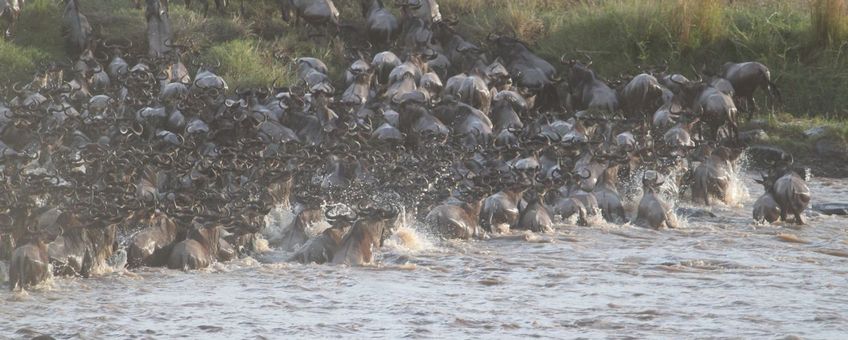
Deaths of migrating wildebeests key to Serengeti’s vibrant ecosystem
YaleOf the 1.2 million wildebeest making the annual migration which peaks from late July through September, an average of 6250 animals drown or are trampled crossing the Mara, which empties into Lake Victoria and is the key water source for wildlife of the greater Serengeti Mara Ecosystem of Kenya and Tanzania.
“It is the equivalent biomass of 10 blue whales dropped into the river,” said David Post, professor of ecology and evolutionary biology and senior author of the paper.
Wildebeest Migration Casualties Feed Serengeti Ecosystem (Source: YaleCampus)
The Yale team, led by Post and lead author Amanda Subalusky, showed this carnage feeds more than just crocodiles and vultures, which fly more than 100 kilometers to feast. The soft tissue decomposes over several weeks and provides as much as 50% of the food that supports fish populations in the river. The carcasses produce maggots that feed small animals such as mongooses. Bones decompose over years and provide a key source of phosphorus in the river, which in turn supports algae, insects, and fish after carcasses have decomposed. The nutrients are transported downstream in the river or transported inland by scavengers, helping support life throughout the entire river basin.
“The frequency and scale of these events suggest that mass drownings may have played an important role in other rivers historically, when large migrations and unimpacted rivers were more common features of the landscape,” said Subalusky, postdoctoral scientist at the Cary Institute of Ecosystem Studies.
This study appears the week of June 19 in the scientific journal Proceedings of the National Academy of Sciences.
Text: Bill Hathaway, Yale
Photo: Pixabay
